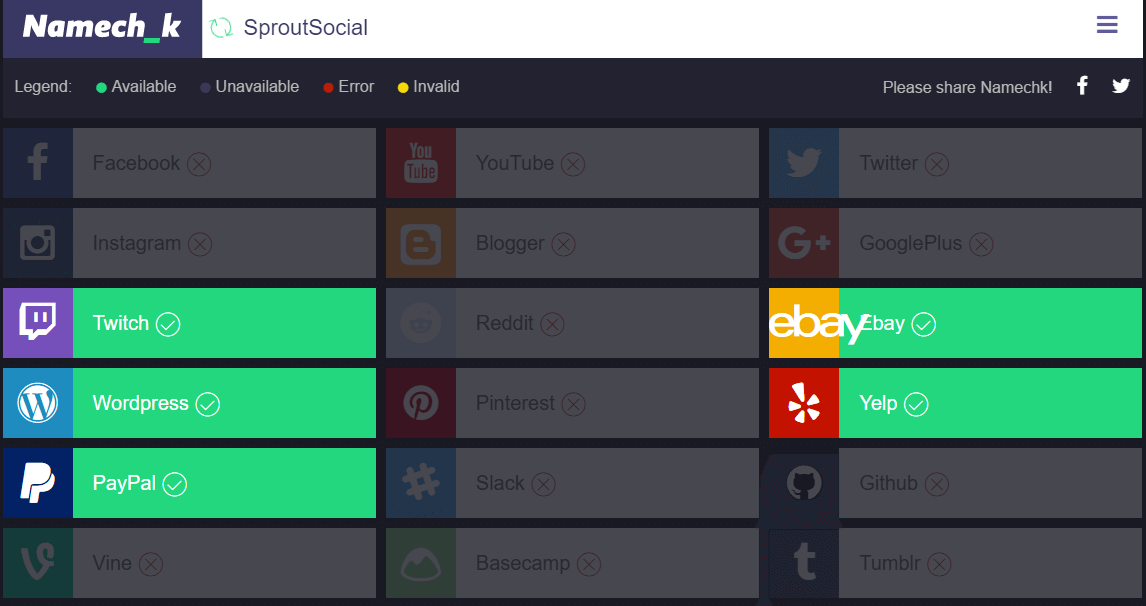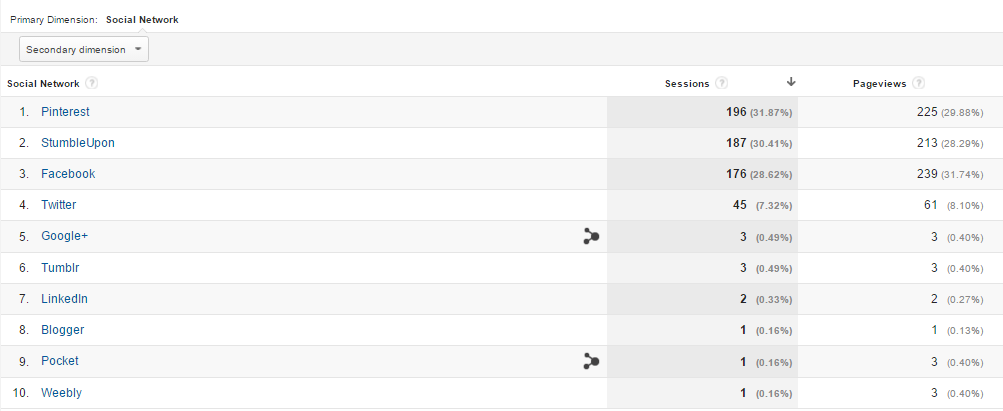We’ve discussed the importance of creating a social media strategy before. Having a clear plan for how your business will use channels like Instagram, Facebook and Twitter significantly increases your chances of success.
After you start implementing your strategy, you need a way to follow up and make sure everything is going as planned. The best way to do that is with a social media audit.
Sprout features mentioned in this article:
What Is a Social Media Audit?
A social media audit is the process of reviewing what’s working, what’s failing and what can be improved upon across your social media channels.
Most people don’t look forward to audits. When’s the last time you were excited to get a letter from the IRS about issues with your tax return? However, not all audits are bad.

Yes, there are spreadsheets involved. And yes, you will have to get detailed. But it’s nowhere near as bad as you think. And with all the social media analytics tools available to help you, it’s pretty simple. On top of that, you only have to do a social media audit monthly, or even quarterly in some cases. As you start to get into the habit of completing audits, each one will become easier.
Whether you’ve never done a social media audit before or are unsure if you did it right, we’ve got you covered. Here’s everything you need to perform a successful social media audit:
Create a Social Media Audit Template
As we mentioned earlier, you’re going to need a social media audit spreadsheet to stay organized. No matter how well you can go off your memory, you cannot do a social media audit in your head. Plus, your audits need to be accessible for everyone on your team as well as having data to be able to track and compare down the road.
In order to make your life a little easier, we created a free social media audit template for you to use:
Don’t feel obligated to limit yourself to the columns and rows in the template. Customize it to fit your needs.
If you’d rather make your own template from scratch, here’s a brief overview of the basics you should include in your social media audit checklist:
- Profile information (name and URL)
- Engagement metrics
- Publishing metrics
- Audience demographics
- Referral traffic
- Channel specific metrics
For any type of metric, you should include the percentage change from the previous month or year. Tracking year over year metrics is a good idea because it accounts for seasonal changes. For instance, retail stores usually see a big influx in social media activity during November and December, so it can skew the comparison for January of the following year.
Another tip is to create one “summary” tab on your spreadsheet, then a tab for each individual social media channel instead of having them all on one. Not every social media channel has the same metrics, so it’s easier to just break them up. For instance, one of the things you’ll measure for Twitter is your number of Retweets. Pinterest and Facebook don’t have Retweets, so those columns would be pointless.
The good part is, if you’re using our free template, all of this is already done for you. You just have to enter in your brand’s data.
Now that you have the base of your template ready, let’s dive into the nitty gritty.

Find All Your Existing Social Media Profiles
The first step of your social media audit is to do a complete review of every social media profile you have, not just the big four (Facebook, Twitter, Instagram and LinkedIn). Did you create a Tumblr five years ago that you forgot about? Is there an old YouTube channel floating around with 15 subscribers?
You can use a tool like Namechk or Knowem to find existing social media profiles. This is also a good time to claim your brand’s name on other platforms, just in case you want to use them in the future.

Our social media audit template has tabs for all the major networks, but it’s simple to add a new tab for any additional platforms you use. We also included a section in the summary tab to list all of your brand’s social profiles, so you have them in one location for reference.

Once you have all your current social profiles listed, the next step is deciding which platforms you want to focus on. This will depend on your brand, and you likely have a good idea of where you want to be active.
The profiles you choose will be the foundation of your audit.
Analyze Each Social Media Profile
Now that you know which profiles you’re auditing, the next step is to dig into the data and see how each is performing. This will be the bulk of your social media audit because it shows you what’s working, what needs to be improved and your biggest opportunities.
In our template, we outline some good metrics to look at to identify how your profiles are performing such as engagement, link clicks, shares, referral traffic, impressions and more. A majority of the metrics can be found in Sprout’s analytics tools.

Don’t worry about struggling to figure out where to find each metric. We included notes in the spreadsheet that tell you exactly where to find each metric. So filling out all the data is simple.

Once you start entering in the data, it should be pretty obvious which channels are outperforming others, especially if you’ve been measuring your efforts for a while.
In addition to seeing your best performing platforms and profiles, you’ll also see areas of opportunity and the channels that require more time and effort.
Identify Top Performing Social Media Posts
This step will improve your social media content strategy. If your posts aren’t engaging and resonating with your followers, you won’t succeed. Use your audit to review the content you’ve shared and identify which posts had the biggest impact.
For platforms like Facebook, Twitter, Instagram and other popular networks, you can use Sprout Social to quickly figure out which posts received the most engagement.

For others like Snapchat or YouTube, there are alternative options to track your content’s performance. For instance, with Snapchat you can track engagement manually with a spreadsheet or other analytics tools.
Our template has sections to measure the performance of your publishing overall, as well as your individual top posts.

If you want to go a bit more in-depth, you can categorize your top posts:
- Videos
- Promotional
- Educational/information
- Entertainment
- Rich media (images and gifs)
This will give you a clear picture of exactly which type of content is working on each channel. From there it’s just a matter of fitting more of that type of successful content into next month’s social media calendar.
Identify Your Site’s Most Shared Content
Now it’s time to look at the content on your website. If you do content audits, then you can probably pull this information from there. All we need to know is which posts are getting the most social shares, and break it down per network.
An easy way to get this data is using a tool like BuzzSumo.
In the Content Research tab, enter your domain name. Make sure you filter the results to only show the last 30 days (if you’re doing this on a monthly basis).

Then you can click the column of each social channel to see the most shared content on each network.

Copy the top 5-10 posts (depending on how often you publish new content) into your spreadsheet. There’s a section for this in the “Summary Tab.”

You’ll also want to find out which social networks drive the most traffic to your website. You can find this in Google Analytics under Acquisition.

This data will help you understand what type of content your audience shares and visits the most, so you can create more of it.
Check Your Branding
Your brand should be immediately recognizable across all of your social media profiles. When there’s a disconnect between your Facebook, Twitter and Instagram profiles, it’s difficult for customers and followers to determine which profiles are official, or if they’re even following the right company.
Consistency is crucial.


There’s a section in our social media audit template for branding. Here’s a brief overview of what’s included:
- Bio: Enter in the bio for each profile
- URL in bio: If you have a URL in your bio, add the link here.
- Verified: Is the account verified?
- Matches style guidelines: If your brand has style guidelines in place, make sure all your social profiles follow them. From your cover photos to profile image and any other visuals associated with your profile, check it all.
If you notice your social media graphics are inconsistent, you can use Landscape to create profile and cover photos for all your accounts using a single image.

Next, look through your bios and URLs. Every bio doesn’t have to be identical, but they should have consistent messaging.
For example, BellyCard has a different bio for every social network, but they all push the same message. A rewards card for consumers’ favorite businesses.


Lastly, take a look at the URL you’re using for each profile. It may seem pointless, but small details like this are easy to overlook. For instance, you may have changed the URL in your Instagram bio to promote a special campaign or promotion at some point. After that campaign is over, you need to change the URL again so people don’t get confused or think you’re still running an old contest or promotion.
Define Your Audience
When you first created your social media marketing strategy, you probably had an idea of who you wanted to target. However, sometimes the people that end up following and engaging with you will be completely different than what you expected. So for this step, you want to audit your followers.
You can get this data a variety of ways. Some networks such as Twitter and Facebook give you information about your audience.

You can also use Sprout’s Audience Demographic report for a high-level view of your audience by age and gender.

Enter this info into your spreadsheet.

It’s a good idea to compare your audiences across all your platforms. Hopefully they’re somewhat consistent. If not, check your messaging and the type of content you share on each network to see if there’s a disconnect.
Explore New Social Media Platforms
New social media channels pop up all the time. You shouldn’t jump on every new app you hear about, but you need to at least be aware of what’s out there. Occasionally you’ll find a golden opportunity to become an early adopter and get a head start on the competition.
In your social media audit spreadsheet, highlight new platforms you want to explore. If you’re using our template, there’s a section for this in the “Summary” tab. And just in case you feel attached to the classics like Facebook, Twitter and Instagram, here’s a look at some of the most popular social networks ranked by monthly active users. How many does your brand use?

Keep in mind that this isn’t a necessity. If you’re already focused on a few networks or don’t find any new platforms that interest you at the moment, don’t force it. But it’s always a good idea to stay on top of new and emerging social media trends.
Calculate Your Monthly ROI
We’ve talked about social media ROI in several different articles. The reason this is so important is because 60% of brands struggle to measure social ROI. As a result, they end up spending time and money on activities that aren’t delivering any value, and probably never will. Additionally, several businesses have pretty strict budgets for social media.
So monitoring and improving your ROI should be a priority. Here’s the basic formula for calculating social ROI:
(Earnings – Costs) x 100 / Costs
But earnings and cost look different from brand to brand. For instance, some brands associate a value to every new visitor they get from social or each lead earned. That’s why we excluded ROI from our template. But we created a separate social media ROI guide that walks you through how how to measure your brand’s return on social.
Create New Objectives
With all of this data in front of you, the next question is how do you put it to use?
The purpose of a social media audit is to give you a better understanding of where you are currently and to make plans for the future.
Use all the information you gather to create new objectives and goals for the month. Whether it’s growing your followers on a certain channel, getting more engagement or broadening your audience, you have all the data you need to make informed decisions on how to reach your new goals with the right social media analytics tools.
In order to help make your social media assessment more actionable, we included a SWOT analysis section for each network in the template. You can use this area to add some high level analysis based on all the data you collect from your audit.
What’s on your social media audit checklist? Leave a comment and let us know!
